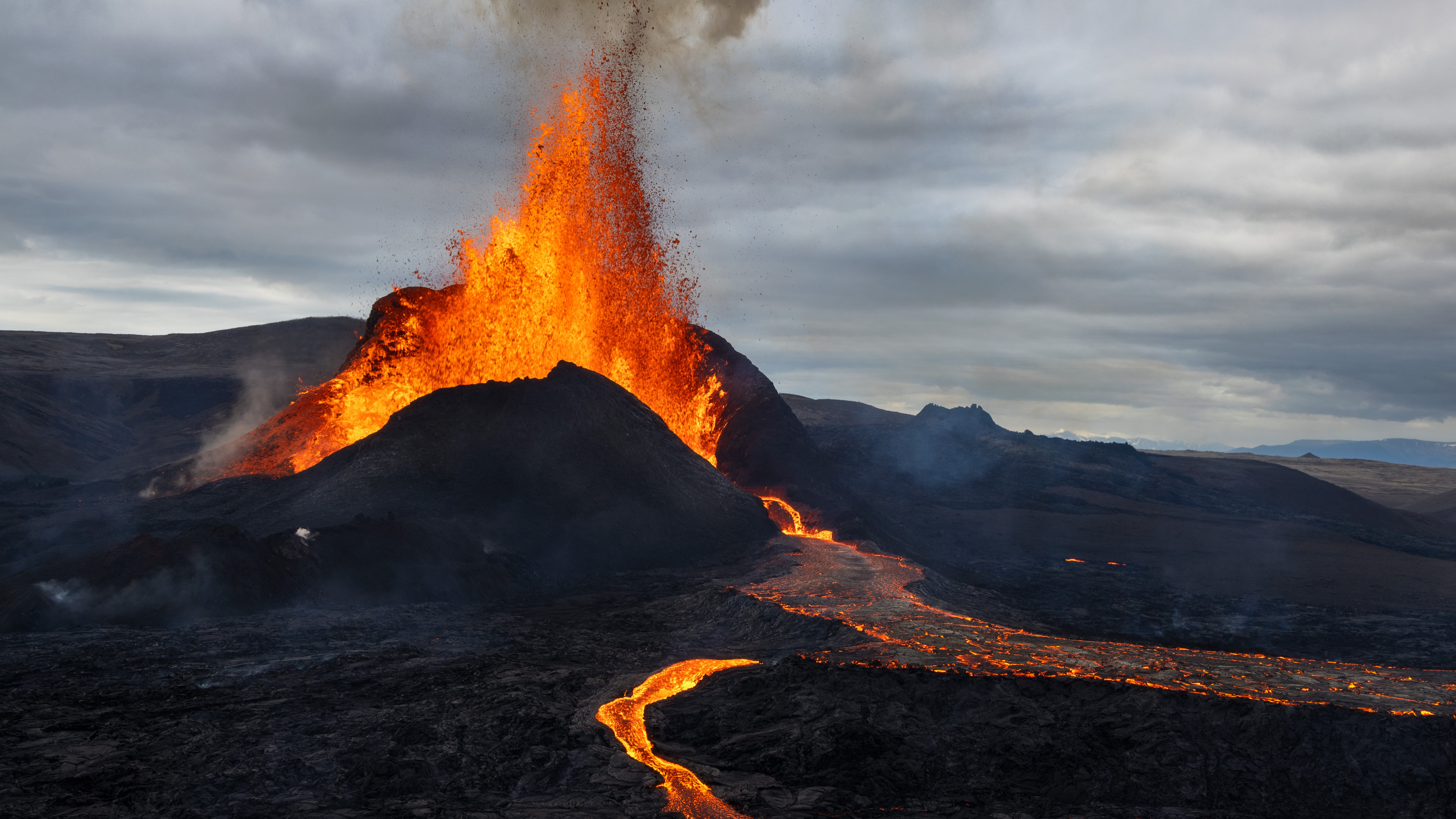To better predict volcanic eruptions, you have to dig deep — very deep
Conditions inside magma chambers may indicate the size, frequency and composition of volcanic eruptions.

In most cases, we know when a volcano is going to erupt. Well, sort of. While we can't predict the precise moment an eruption will begin, volcanoes often show signs that they're "waking up." Typically, those signs come from changes in the volcano itself, as well as from changes within the topmost layers of Earth's crust. But new research, spearheaded by teams from Imperial College London and the University of Bristol, suggests we should be looking deeper — up to 12.5 miles (20 km) underground — at different eruption cues that might help us improve our predictions.
"We looked at volcanoes around the world and dug deeper than previous studies that focused on shallow underground chambers where magma is stored before eruptions," Catherine Booth, a research associate in the Department of Earth Science and Engineering at Imperial College London, said in a statement. "We focused on understanding magma source reservoirs deep beneath our feet, where extreme heat melts solid rocks into magma at depths of around 10 to 20 kilometers."
After collecting data from this part of the Earth's crust, the team fed that data into computer models. What they found was that certain conditions within deep magma reservoirs could indicate the size, composition and frequency of volcanic eruptions. By studying what's going on below, we can better predict what might happen above.
Related: Volcanoes may carpet surface of newfound Earth-size exoplanet
Magma buoyancy is perhaps one of the more surprising indicators of an eruption. "Contrary to previous beliefs, our study suggests that the buoyancy of the magma, rather than the proportion of solid and molten rock, is what drives eruptions," said Booth. "Once the magma becomes buoyant enough to float, it rises and creates fractures in the overlying solid rock — and it then flows through these fractures very rapidly, causing an eruption."
Another factor is the size of the reservoir itself. While it's true that larger reservoirs hold more magma, that doesn't always mean the eruption will be greater. The larger the reservoir, the more heat is dispersed, reducing the rate of melting rock into magma. Plus, the longer magma sits underground, the smaller the eruption will be.
"By improving our understanding of the processes behind volcanic activity and providing models that shed light on the factors controlling eruptions, our study is a crucial step towards better monitoring and forecasting of these powerful geological events," said Matt Jackson, chair in geological fluid dynamics in the Department of Earth Science and Engineering at Imperial College London.
Get the Space.com Newsletter
Breaking space news, the latest updates on rocket launches, skywatching events and more!
The new study was published on May 10 in the journal Science Advances.
Join our Space Forums to keep talking space on the latest missions, night sky and more! And if you have a news tip, correction or comment, let us know at: community@space.com.

Space.com contributing writer Stefanie Waldek is a self-taught space nerd and aviation geek who is passionate about all things spaceflight and astronomy. With a background in travel and design journalism, as well as a Bachelor of Arts degree from New York University, she specializes in the budding space tourism industry and Earth-based astrotourism. In her free time, you can find her watching rocket launches or looking up at the stars, wondering what is out there. Learn more about her work at www.stefaniewaldek.com.
